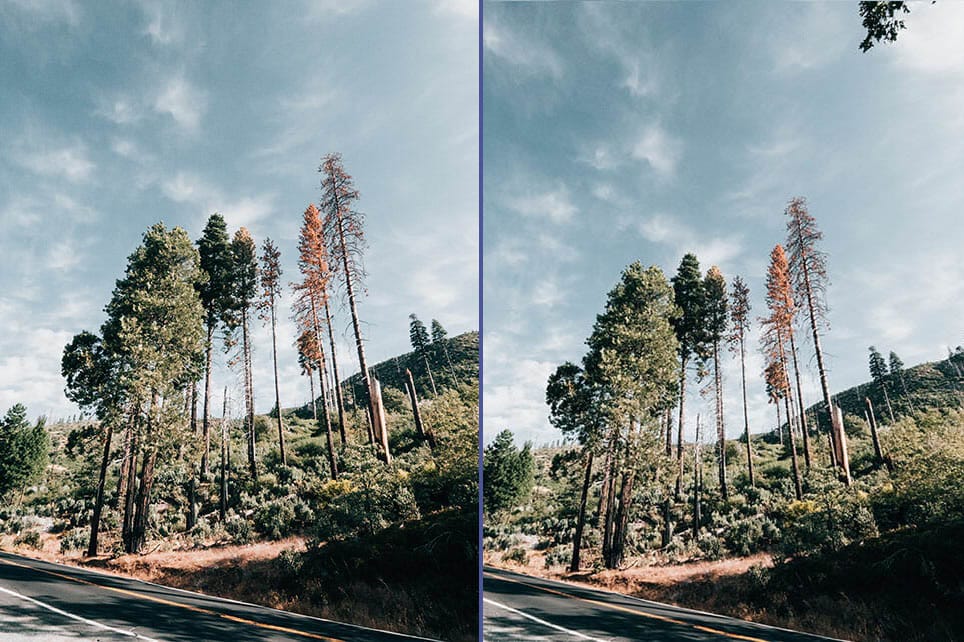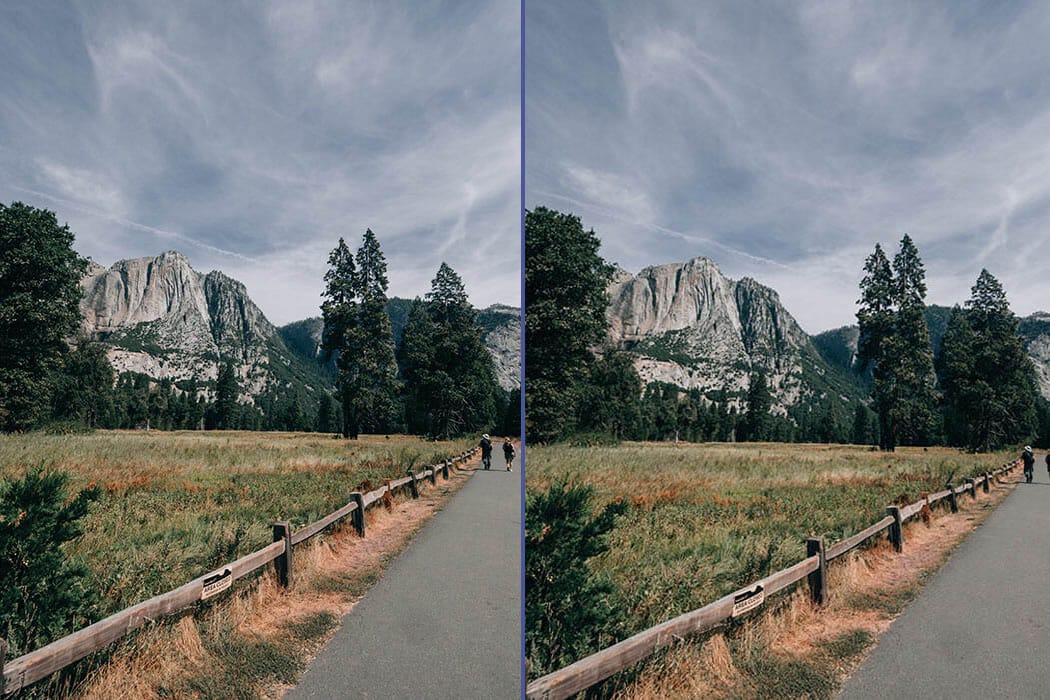
Image by Emily Lowrey
Knowing how to crop photos can make or break an image. It seems like such a simple step, but a little extra focus on how you crop can push your photography skills to the next level.
As you can see in the example below, the photo is much more balanced and appealing in the image to the left. Cropping off hands or feet can be distracting and ruin an otherwise good image. We will also learn the best places to crop limbs in an image if you have to.
Making clear decisions about your cropping is important for any genre of photography, but let’s look at some landscape photos first.
As well as thinking about the usual compositional techniques such as the rule of thirds, and leading lines, it is also best practice to quickly check the edges of your image for any distractions. Ask yourself:
• Have I chopped something in half at the edge of the frame?
• Would this image work better keeping this element in, or removing it entirely?
• Does this element add to the image, or distract from it?

Image by Emily Lowrey
The main subject of this image is the mountain. The leading lines are strong, the composition is great. But the hikers, even though they’re small in the frame, make a huge impact on the rest of the image.
The people add a sense of scale and tell a story of the place. If we crop these little details out of frame, the image overall becomes much weaker.
Mistakes like this happen more often than you’d think! We’re often so excited about the scenery and the main subject that we might not pay attention to little details.
Get into the habit of scanning around the edges of your frame before you click your shutter. This one-second check can make huge improvements in your photography!

Image by Emily Lowrey
In the example above, the footsteps work as a leading line into the image. They tell a story of how isolated the place is. In the image to the left, with the closest footstep half cropped off, it makes the effect much less pleasing.
Taking care to keeping elements fully in frame (or fully out of frame!) can have a huge impact on the overall feel of the image.
Getting things right in-camera should always be your aim. But this doesn’t always happen. We’re all human! Luckily, we are blessed now with options to correct our mistakes in editing. This can take the form of a simple crop change, or you can digitally remove distractions using clone tools or the content-aware fill in Photoshop.
In this example below, cropping would have made the composition weaker. The image would lose a lot of the grandeur that makes it so appealing. Luckily, with a little Photoshop wizardry, removing the distraction was simple.

Image by Emily Lowrey
Sometimes, cropping in will work just fine. The image below has the same sort of distraction and, in this instance, cropping in worked perfectly well. This will differ from image to image, but it’s great that we have the choice of either method at our disposal.

Image by Emily Lowrey
A portrait image is quite simple in the sense that it has one very distinct subject. To make a portrait effective, we’ve got to make sure that any other element in the image adds to the story, rather than distracts.
It is also important if we need to, to crop limbs in the correct places. A popular rule is: Never crop a person at the joints.
This means no cropping at the knees or elbows. Something above or below is usually much more pleasing. Let’s see an example!
The first image below, we see a crop above the knees. This seems more natural and doesn’t distract the viewer. It looks deliberate.
On the second one, however, when the image is cropped at the knees, it gives the viewer a feeling that something is missing from the image. Where are her legs! It feels like an unnatural place to crop the image.

Image by Emily Lowrey
In the image below you should clearly be able to see how distracting it is to crop half of the model’s feet out of the frame.
When we are concentrating on the face and the eyes, it can be an easy mistake to make. Check your framing every time to avoid making these sorts of mistakes.

Image by Emily Lowrey
Headroom is something we should always keep in mind. This is a very simple concept, and it can make your images so much stronger.
Leaving headroom means that your subject has some space around it and it isn’t almost touching an edge. Most of the time we don’t want our subject to get too close to any edge of the frame.
Leaving a bit of space around the subject makes the composition feel deliberate and makes the image more effective. See an example of this below. The second image is more balanced and pleasing.

Image by Emily Lowrey
Cropping distractions out of our images is a vital skill to learn.
If you get into the habit of quickly checking the edges of your image before taking a photo, your photography will improve and, better still, your editing process will be much faster.
Headroom is also something we should keep an eye on to make sure our subjects aren’t lost in the frame. In some photography genres, like portraiture, it is easy to make sure your subject is central, but other forms, like macro photography, can be a bit trickier.
Master cropping and you’ll be well on the way to creating more deliberate, pleasing images!
Discover the BEST way on how to clean a camera sensor using swaps, rocket blowers and pencil brushes to give your shots a dust-free finish!
Capture the magic of the night with our beginner’s guide to night photography. Learn tips and techniques for stunning results.
Master the art of solar eclipse photography with expert tips on equipment, settings, and precautions for stunning celestial images.
Learn the basics of photography – fast – with our FREE 60-Second Photographer online course. Each class is short and sharp with simple, actionable steps that give you immediate results.
x 30 lessons

© iPhotography™
Become a confident and competent photographer in less than 30 minutes!
Before you leave, make sure you’ve secured your FREE online photography course (worth £29.99)
Each class is just 60-seconds or less making it the fastest and easiest way to learn photography!